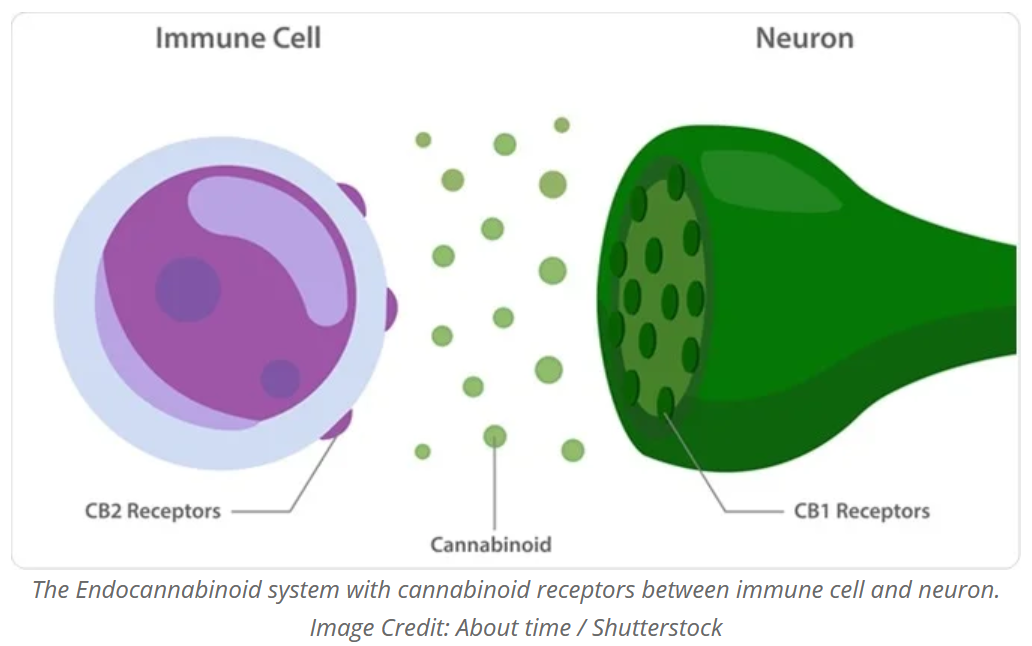Are you curious about how cannabinoids interact with the human body? Cannabinoid receptors, known as CB1 and CB2 receptors, play a crucial role in the endocannabinoid system (ECS) and have been a topic of extensive research in recent years. In this blog post, we will delve into the mechanisms of CB1 and CB2 receptors and their functions in the human body, backed by scientific research.
CB1 Receptors: Unraveling Their Role
CB1 receptors are primarily found in the brain and central nervous system (CNS) and are responsible for mediating the psychoactive effects of cannabinoids like THC. Research suggests that CB1 receptors are involved in various physiological processes, including pain modulation, appetite regulation, mood regulation, and immune function.
According to a study published in the journal Nature Reviews Neuroscience titled “Cannabinoid Receptors and the Endocannabinoid System: Signaling and Function in the Central Nervous System” CB1 receptors are widely distributed in the CNS and are concentrated in regions associated with cognitive function, motor control, and emotional regulation. The study provides insights into the localization and functions of CB1 receptors in the brain, shedding light on their complex role in regulating various physiological processes.
Additionally, a research article titled “The Endocannabinoid System as a Target for the Treatment of Neurological Disorders” published in the journal Expert Opinion on Therapeutic Targets highlights the involvement of CB1 receptors in neurological disorders such as epilepsy, multiple sclerosis, and Parkinson’s disease. The study discusses the therapeutic potential of targeting CB1 receptors for the treatment of these conditions, emphasizing the importance of understanding CB1 receptors’ mechanisms in the human body.
CB2 Receptors: Unveiling Their Functions
CB2 receptors are primarily found in the immune system and peripheral tissues, such as the spleen, tonsils, and immune cells. They are known to play a crucial role in modulating immune responses and inflammation. CB2 receptors have gained significant attention in recent years due to their potential therapeutic implications in various diseases, including chronic pain, inflammation, and autoimmune disorders.
A review article titled “CB2 Receptors as a Therapeutic Target—What Does the Future Hold?” published in the journal Molecular Pharmacology discusses the localization and functions of CB2 receptors in different tissues and their potential therapeutic applications. The study highlights the involvement of CB2 receptors in the regulation of immune responses and inflammation, suggesting that targeting CB2 receptors could be a promising approach for the treatment of various diseases.
CB1 and CB2 receptors are key players in the endocannabinoid system and play vital roles in various physiological processes in the human body. Research on CB1 and CB2 receptors has shed light on their mechanisms and functions, providing a deeper understanding of how cannabinoids interact with the body. Further research in this field may uncover new insights and pave the way for innovative cannabinoid-based therapies.








